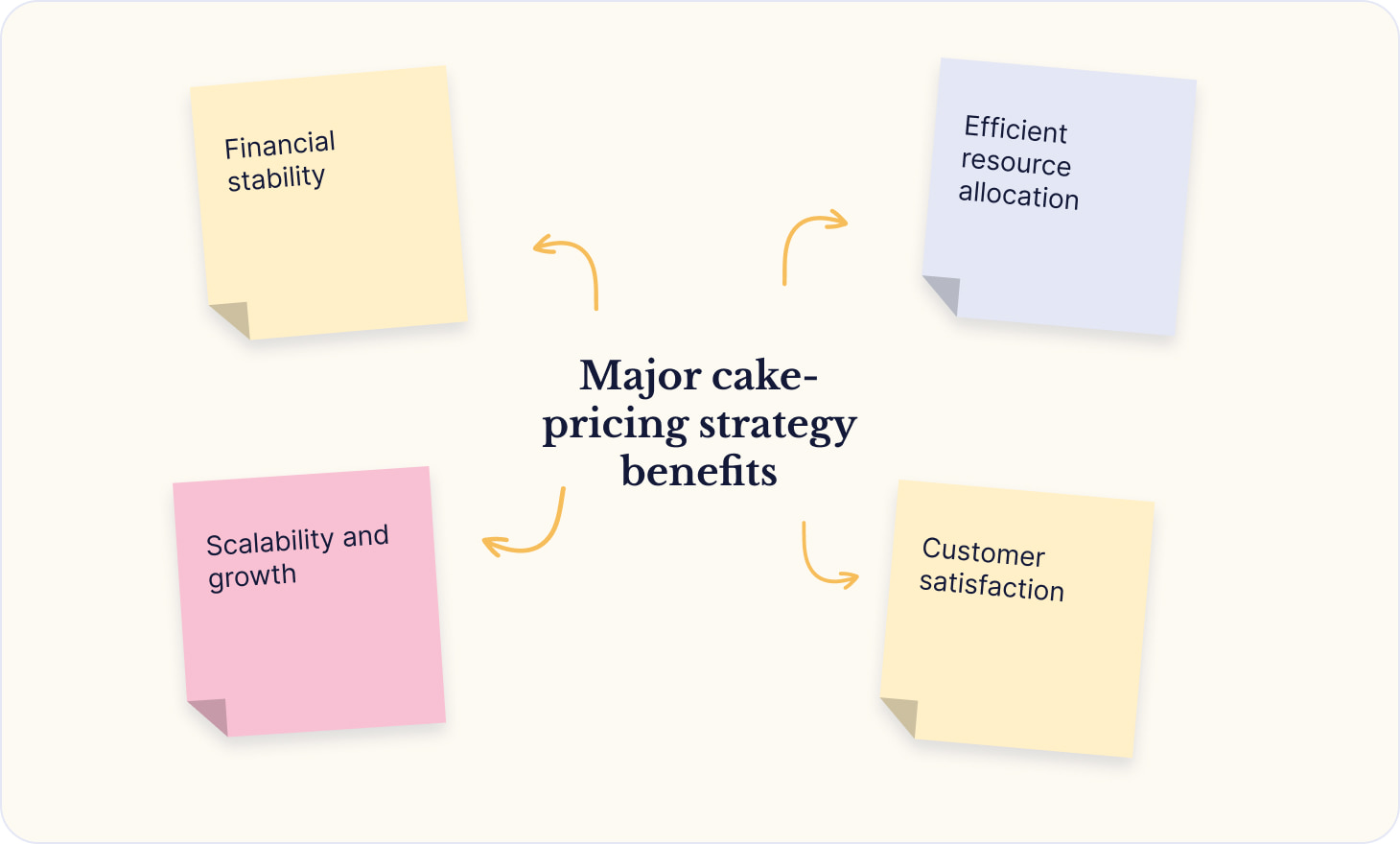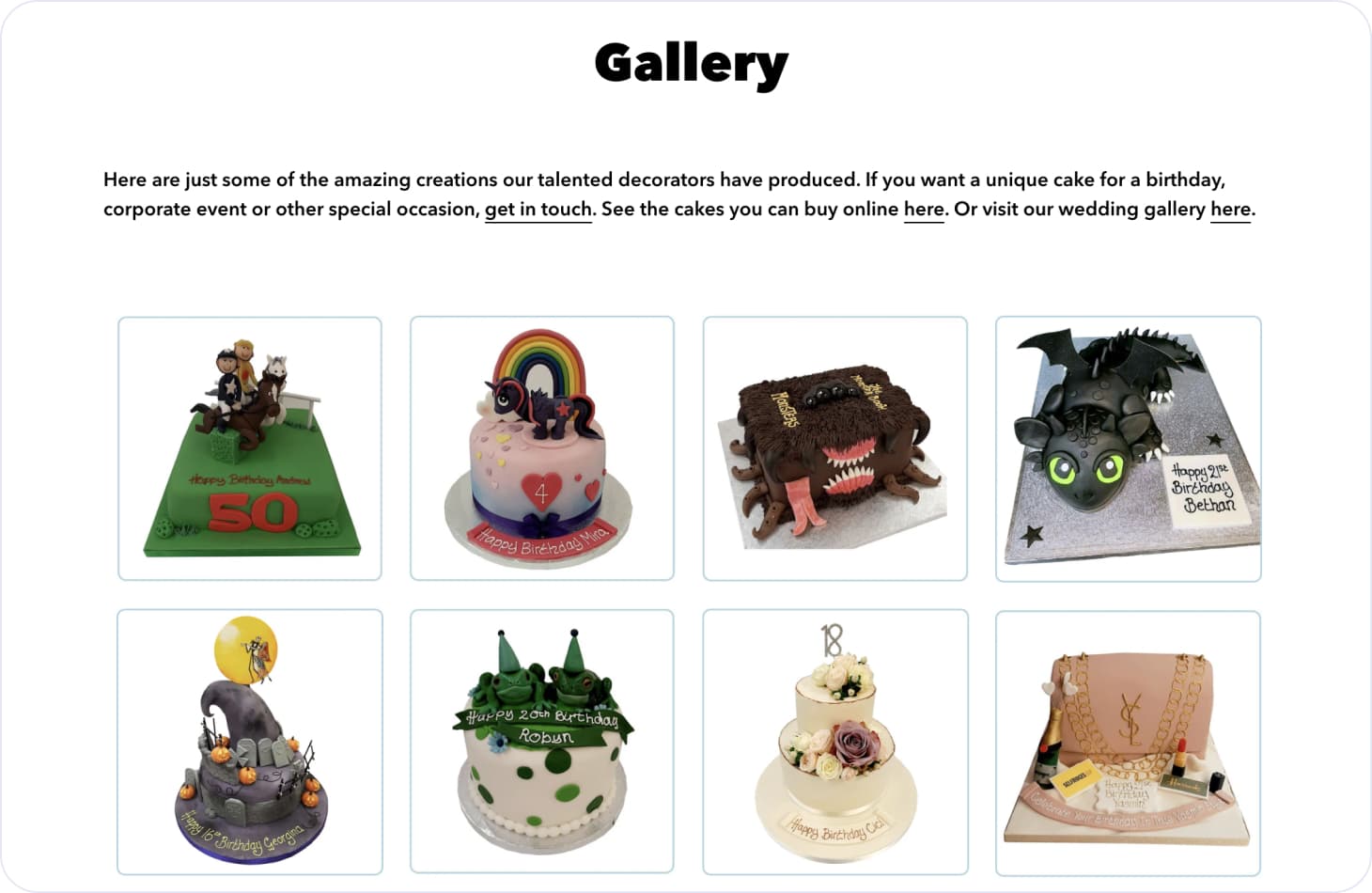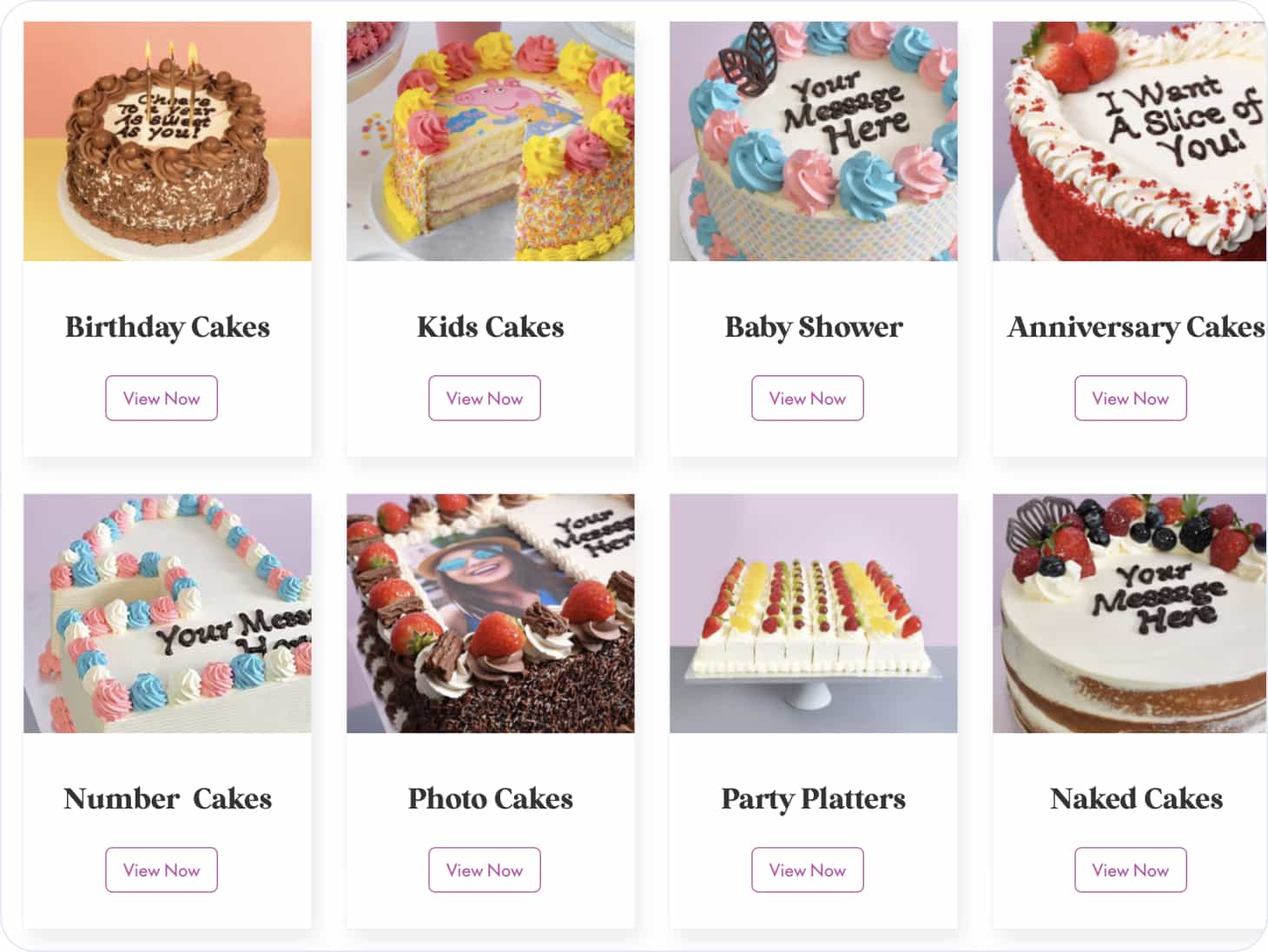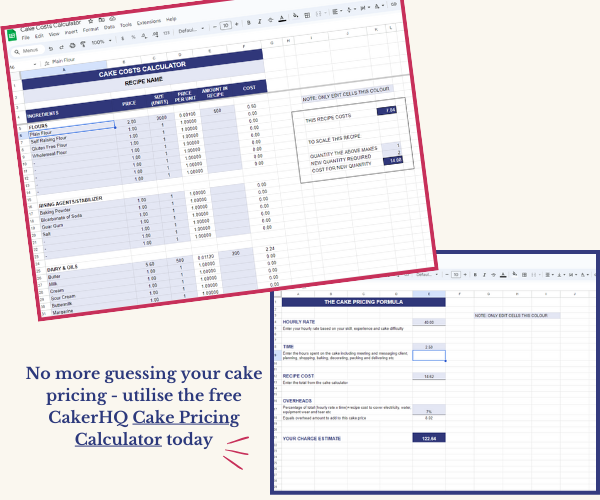Starting a cake-making venture can be easy. Despite it feeling like a stroll in a park, there are many interesting and crucial factors you need to consider to set your business up for success. One of them is an effective pricing strategy your business should adhere to.
When you are just starting out, at some point, you start wondering how much to charge for cakes. In this regard, pricing your goods accurately is a strategic aspect of your business. In the short term, it will bring order and organisation to the working environment. In the long run, along with the order, it will bring predictable profitability, stable income, and much more.
In this piece, we will walk you through vital parts of the cake pricing process. We will cover essential parts of the strategy in great detail, accompanying them with tips for effective pricing setup.
But first, let’s figure out what benefits the right pricing strategy can bring to the table.
Major benefits of a proper pricing strategy
As mentioned, order and organisation are two of the most crucial benefits of the strategy. However, there are a lot more.
Financial stability
First of all, a reliable pricing strategy can be a safeguard in revenue matters. For instance, with an understanding of how much to charge for homemade cakes, you can project future income. Then, effectively manage it to maximise performance. Having a financially stable base enables you to reinvest in your business, expand your offerings, or save for future growth.
Efficient resource allocation
By understanding the costs involved in producing each cake, you can allocate resources more efficiently. For instance, sound resource management can help you optimise ingredient inventory, manage labour hours, and minimise waste.
As a result, you can save a lot of funds and create operational efficiency. This also affects your clientele, as organised and reliable ventures tend to attract more people.
Scalability and growth
Utilising a well-set-up strategy creates room for scaling your business. How does it work? Simply enough.
For instance, if you set up a clear pricing strategy, it means you have strict control over your revenue, time, and other resources. Consequently, you can effectively manage them. You can allocate additional funds to open a store front, purchase new appliances, hire people, etc.
As you establish a reputation for quality and fair pricing, you can attract new customers, secure larger orders, and expand into new markets or segments. This scalability can lead to increased revenue and opportunities for expansion.
Customer satisfaction
Proving your business is trustworthy and provides superior value, customers are more likely to stick with your venture. In this matter, you can adhere to a simple rule: “Happy customers are returning customers.”
Thanks to a clear pricing strategy, and fair price tags, you earn credibility and trust. Once you earn them, people will start to recommend your cakes to others, share their orders on social media, and simply spread the word about your venture.
Need to manage your venture effectively? Try CakerHQ! Register now
Essential parts of the cake pricing strategy
A pricing strategy can be seen as complex because many components determine the final cost of any product. The same goes for baked goods, cakes, and pastries. Your customers will always be interested in how much cakes cost, and you must be able to provide the exact price when quoting. So, let’s take a look at the most significant aspects to consider when composing a cake pricing strategy.
1. The cost factors
At this point, we’ll review the most important factors that determine the base price of your product. Please note that cost factors and other parts of the strategy should be documented in your business plan. With a base price of cakes in place, it will be easier to determine how much to charge for decorated cakes and any other custom ones.
Ingredient costs
To form the base price, you need to calculate all the ingredient costs. This step must include every single product you use: flour, sugar, eggs, butter, flavourings, and any additional fillings or decorations, everything!
Labour and time involved
Labour and time also have a price, and you must account for them. To figure out how much to charge for time to make cakes, browse through the menu you offer. Break down the cake-making process into individual tasks such as mixing batter, baking, decorating, and cleanup. Don’t forget the time it takes to plan and design your cakes, too. The hours can start to add up when you think about all the tasks involved in creating your cakes.
Then, note the time you spent on each task. Assign an appropriate labour cost to each task by using and hourly rate and take into account your efficiency and skill level when assigning this rate.
It would also be wise to consider different scenarios where you have extremely time-limited orders or ones requiring exquisite work. Hence, make sure to include additional fees for urgent orders, delivery services, exceptional decorations, etc.
Overhead expenses
These expenses aren’t directly connected to baking, but the base price must account for them. Normally, overhead expenses include rent, equipment, marketing, license, and delivery costs.
Hence, you must account for and plan those expenses separately. For example, speaking of marketing expenses, if you have marketing strategy you might have expenses such as a marketing agency or assistant, purchasing ads etc.
The same goes for delivery. Would need to hire a courier or deliver yourself. Don't forget to think about the time it will take you to deliver yourself and any setup time once the cake is at the venue.
The point is you need to plan ahead for with lot of these overhead expenses. This way, you will be able to effectively manage each aspect. Moreover, in case of any difficulties, you will have a plan to beat them.
The next thing you need to do is determine the proportion of these expenses allocated to cake production based on factors such as space utilisation and time spent on cake-related activities. Then, calculate the share of overhead expenses attributed to each cake by applying the determined proportion.
Pricing for profit
At this point, you need to determine the profit margin you aim to achieve for each completed cake. This can be a percentage, a fixed monetary amount or a rate per hour of your time.
To calculate the profit margin, you can multiply the total cake cost (ingredients, labour, and overhead expenses) by the desired profit margin percentage, by adding the fixed profit amount on top of the base price, or the rate per hour you wish to charge.
2. Different cake types and complexity
The pricing strategy you are going to develop has to be flexible enough to account for different cake types. They may vary in complexity and require a different approach. Here’s how you can handle it.
Differentiate basic and specialty cakes
You need to draw a clear line between basic and specialty cakes. Basic cakes should be the ones you regularly sell, typically simple in design, flavour, and decoration.
The specialty cakes are more customised and require additional skill and effort. For instance, users may wonder how much do wedding cakes cost and how long it takes to bake a birthday cake. So, you need to establish a solid system to manage special cakes, letting users know the exact cost of cakes.
Now, realising the difference, determine the base price for basic cakes. For specialty cakes, account for the additional time, expertise level, and resources required to create unique designs and incorporate special requests. This may involve higher ingredient costs, intricate decorations, or custom flavours and many more hours of your time.
Offer cake sizes and tiers
Consider the size and number of tiers when pricing a cake. For example, larger cakes require more ingredients and take longer to assemble, resulting in increased labour and time costs.
To set the price strategy for them, you can determine the price per serving based on the cake's size and tiers. This way, you can develop consistent pricing regardless of the specific dimensions of each cake.
Incorporate design intricacy
In your pricing strategy, you should also consider special design orders and their complexity. Intricate designs may involve sculpting, hand-piping, fondant work, intricate sugar figures, or other decorative elements that demand exceptional skill and time.
Referring to your own expertise, you need to find a balance between gain and affordability for buyers. Hence, assign a design complexity factor that represents the additional labour and expertise required for intricate designs.
Then, simply adjust the base price accordingly to account for the added time, effort, and materials involved in creating visually stunning and intricate cake designs.
Looking for a place to share your cakes? Give CakerHQ a try! Sign up
3. Market analysis
Apart from setting a solid gplatform for your venture, a pricing strategy is an instrument to surpass your competitors. When, for example, you wonder how your calculated price compares in the market you can always reference your competitors’ offerings. Here are the most important things you should do, analysis-wise.
Research local market trends
Stay tuned for the latest trends in the cake industry and your local market. Regularly monitor popular flavours, design styles, and emerging cake trends. To cover a wider audience, it would also be wise to research customer preferences. For example, you can account for dietary restrictions, make your goods gluten-free, vegan, etc.
Another important aspect of market research is identifying market gaps. In a nutshell, they are opportunities or niches where you can offer unique and sought-after goods that cater to specific trends or preferences.
Identify target customers
Next, to bring the most value to customers, define your target customer base. In this matter, you should consider even basic factors like age, gender, average income, etc.
Moreover, it is important to project pricing over a certain group of people. For instance, you can see which of your cakes are popular for family occasions and which ones are ordered for events like weddings, meetings, and corporate events. Thus, you will be able to differentiate orders, see patterns, and create a sound pricing strategy tailored to your target customers.
With this data, you will be able to make data-driven decisions, tailor your pricing to match users’ preferences, and leave a lasting professional impression.
Analyse your competitors
Another part of success is learning about other businesses targeting the same market as you.
We recommend that you treat your fellow bakers not as competitors but as potential colleagues. This way, you will be able to build a network of like-minded professionals sharing the same goals and making the cake-creating business a more appealing and professional industry. With this approach, you can extend your expertise and team up with different cake-makers.
4. Communicating value to customers
You cannot expect customers to never challenge your prices. Let’s elaborate on this idea. For example, there always will be people who ask why your products are either so expensive or too affordable. Consequently, when you think of how much to charge for decorative cakes, for example, you need to supplement your pricing strategy with value presentation. Here’s what you can do.
First of all, highlight quality ingredients and craftsmanship. Nowadays, creating engaging content, compelling text, and images is easier than ever. Hence, emphasise the products you use and regularly showcase your work along with customers’ reviews.
Here’s an example of how a UK-based cake business showcases its works.
Source: The Cake Shop
Secondly, showcase unique design and customisation options. The more options you offer – the wider audience you’ll cover. For instance, you can create cakes for numerous occasions with different sizes, flavours, and designs. The whole point of this is to simply think ahead of the customer and let them browse things they’re exactly looking for.
For instance, here’s a good example of how a venture covers a wide range of baked goods.
Source: Eggfree Cake Box
Lastly, consider offering value-added services. They can be a delivery service, catering, or even complimentary tastings. They can enhance the overall customer experience with your business.
However, with each new service added, you need to meticulously document all the rules, prices, etc. Communicate any guarantees or assurances you offer, such as ensuring on-time delivery, addressing customer concerns promptly, or providing refunds or replacements in the event of dissatisfaction.
Tips for effective pricing
So, we walked through some of the most vital points on your way to pricing your products. However, as already mentioned, this whole pricing strategy topic is complex, and there are many circumstances that can affect it. Consequently, here are three tips to strengthen your pricing strategy.
Keep detailed records and account for expenses
Maintaining accurate and detailed records of all expenses related to cake production can greatly simplify your management routine. Moreover, with meticulously documented expenses, you can easily analyse everything, plan future expansion, etc.
Prices and standards may fluctuate, and you have to account for it. To make it more effective, regularly review and update these records to ensure they reflect the current costs accurately. Thorough record-keeping allows you to have a clear understanding of your cost structure and helps in making informed pricing decisions.
Lastly, you can rely on software solutions to keep track of the data. For instance, if you operate as a small venture, you could easily set up spreadsheets. In this matter, you can use Google Spreadsheets or Microsoft Excel. They provide more than enough features to create complex structures and even have a myriad of templates.
On the other hand, if your venture grows quickly and there’s a more complex money flow, you can turn to more advanced software solutions. For instance, you could use MYOB or Xero.
Consider customer feedback and satisfaction
You may see doing business from your perspective, but to make it effective, you need to listen to your customers. Hence, you need to emphasise listening to their feedback and the level of satisfaction with your services. Actively seek and consider customer feedback regarding your pricing. This can be done through surveys, reviews, or direct customer communication.
If you have plenty of reviews, take time to analyse them. This way, you can see patterns or common concerns raised by customers related to pricing. Then, regularly evaluate customer satisfaction levels and adjust your pricing strategies accordingly to ensure they align with customers' perceived value and willingness to pay. Remember though that you are ub business to be profitable and it is unfortunately not uncommon for clients to have an unrealistic expectation around pricing. Don't take it personally, with some education they can understand exactly what is involved in creating your beautiful and delicious cakes.
Continuously refine pricing strategies
To stay afloat in the market, treat pricing as an ongoing process rather than a one-time decision. Normally, trends change, rates fluctuate, and your pricing strategy must be flexible enough to withstand the changes.
Hence, regularly review and analyse your pricing strategies to assess their effectiveness. You can also experiment with different pricing models or strategies to find the optimal approach for your baking business or bakery.
In this matter, customer feedback can be extremely helpful. Make sure you regularly check reviews and feedback, analyse the most popular opinions and connect the dots between them and your pricing. Once you create a solid customer base around your venture, you will be able to create a very efficient pricing policy suitable for all your customers, as it will be partially based on their feedback.
Birthday cake pricing example
Now that we have defined the majority of aspects that influence the cost of the cake, let’s price one as an example. In this matter, let’s take a simple birthday cake and break its creation down to the actual steps.
In this example, we’ll be looking at a 4-step process one of our bakers uses to price a cake on CakerHQ.
So, first off, you need to determine your hourly rate.
In this regard, consider your skill level, experience, and the difficulty of the cake. Here, we’ll look at the average hourly rate of $25.00 AUD.
Secondly, you need to calculate the time spent.
Include all the hours dedicated to the cake, including client meetings, messaging, planning, shopping, baking, decorating, packing, and delivering. Following the idea of a birthday cake, here’s how much time you will approximately need to spend on assembling it.
| Step | Time Estimate |
| Baking the cake | 30 minutes to 1 hour |
| Carving and assembling | 30 minutes to 2 hours |
| Crumb coating | 15-30 minutes |
| Decorating the cake | 1-4+ hours |
| Final touches | 15 minutes to 1 hour |
| Total preparation time |
3 to 5 hours total |
Thirdly, you need to include the entire recipe cost, which includes the total cost of the ingredients you use. In this example, let’s assume the recipe cost is $7.04 AUD.
Lastly, calculate overheads. Let’s apply a percentage of, let’s say, 7%, to the sum of the total hourly rate multiplied by the time spent plus the recipe cost. This is intended to cover all overheads such as covers electricity, water, equipment wear and tear, and other overhead costs.
Finally, simply sum everything up! Speaking of our example, let’s say it took 4 hours to create a bento cake. At a rate of $25/hour AUD, it’s $100 AUD. Then, add the recipe cost of $7.04 AUD and the overheads of $7.49 AUD.
The resulting total charge estimate for your bento cake would be AUD 114.53.
Also, with you in mind, the CakerHQ team has developed a cake cost calculator for all home-based cake makers.
To get your free copy of the CakerHQ Cake Calculator:
1. Leave an email in the form below.
2. The CakerHQ team send you a very useful link to the Google Spreadsheets sheet.
3. You very easily and most importantly quickly calculate the cost of a cake for your customers.
Bottom line
In conclusion, it’s worth noting that determining how much cakes cost requires both time and effort. There’s no single right answer. You should rely on personal expertise and be flexible enough to adapt to the ever-changing user needs.
We sincerely hope that this guide will be helpful in setting up the right pricing strategy for your goods on CakerHQ. Our platform provides more than enough room to monitor everything we mentioned in this piece. You can observe your competitors, see trends, and learn what customers prefer. Thus, CakerHQ provides all the tools to turn your cooking passion into a profitable venture.




